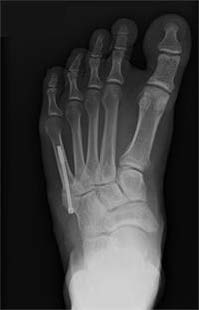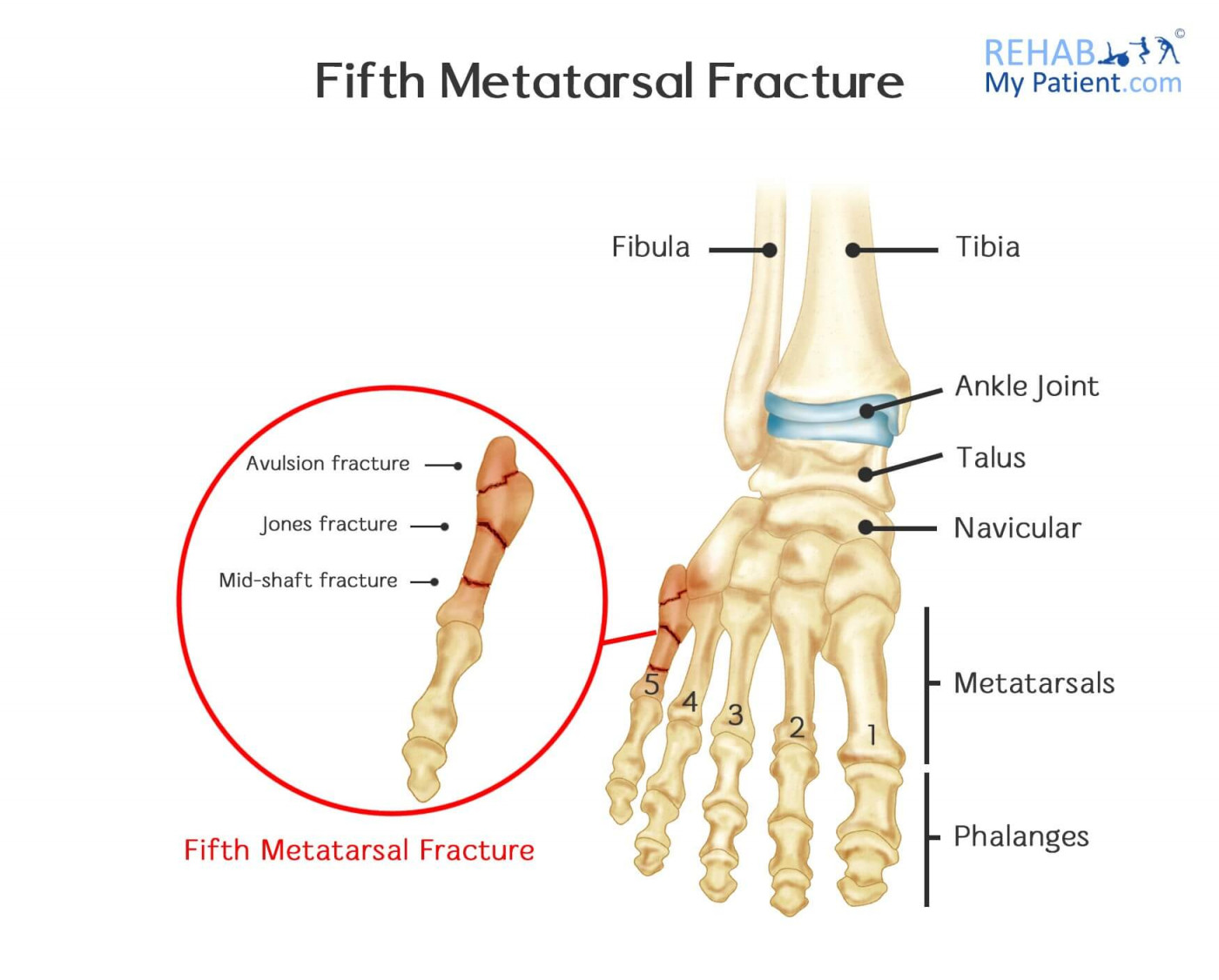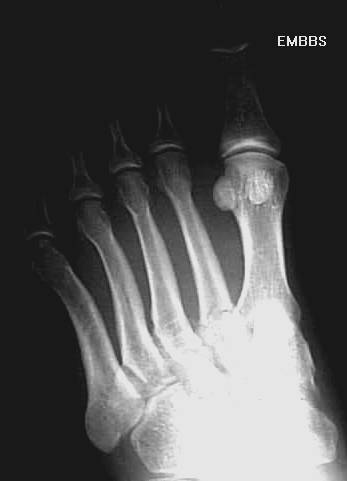

If no callus formation is noted continue weight-bearing short leg cast. If callus formation is noted place in cam-walker, WBAT. 7-10 Days: place in weight-bearing short leg cast.Post-op: place in bulky dressing with posterior splint, non-weight bearing.Nonunion: 7-28% for acute true Jones fractures treated with non-weight bearing casts.Varify appropriate intramedullary screw placed and fracture reduction with c-arm.Needs to have lag screw configuration to allow compression. May use fully threaded screw is bone proximal to fracture is overdrilled. Countersink the screw head to decrease chance of postoperative painful hardware. Place 4.5mm or 6.5mm partially threaded cannulated screw.Drill proximal cortex and across any sclerotic intramedullary fracture areas with a cannulated drill bit.Guide wire should extend to the curvatue of the 5th MT shaft. Place wire down the shaft of the 5th metatarsal.


Semilateral decubitus position (bean bag or large hip bump).Pre-operative antibiotics, +/- regional block.Wright Medical Carolina Jones Fracture Screw.Bone grafting is generally not needed if intramedullary reaming is done.Considered cannuated compression screws available from various manufactures Ensure appropriate cannulated screws are available.Jones Fracture Technique Pre-op Planning / Special Considerations Electrical Stimulation (see Nonunion) (Holmes GB Jr, Foot Ankle Int 1994 15:552).ORIF with bone grafting (Torg JS, JBJS, 1984 66A:209).Tuberosity avulsion fractures of the 5th metatarsal base.Jones Fracture Technique Contraindications Acute nondisplaced diaphyseal fracture in a high-level athlete.Acute nondisplaced true Jones fracture in a high-level athlete.Type II: nonweight-bearing immobilization vs.Synonyms: closed intramedullary screw fixation, Jones fracture ORIF Type I: nonweight-bearing immobilization for six to eight weeks (may require up to 20 weeks) Stress fracture of the proximal metatarsal within 1.5 cm of tuberosity Types II, III: variable healing potential surgical fixation for active athletes or patients preferring surgical therapy Type II: nonweight-bearing immobilization vs. Type I: nonweight-bearing immobilization for six to eight weeks Laterally directed force on forefoot with ankle in plantar flexion Although most fractures of the proximal portion of the fifth metatarsal respond well to appropriate management, delayed union, muscle atrophy and chronic pain may be long-term complications.Īcute fracture of the proximal metatarsal within 1.5 cm of tuberosity (Jones fracture) All displaced fractures and type III fractures should be managed surgically. Type II fractures may also be treated conservatively or may be managed surgically, depending on patient preference and other factors. Type I fractures are generally treated conservatively with a nonweight-bearing short leg cast for six to eight weeks. Management and prognosis of both acute (Jones fracture) and stress fracture of the fifth metatarsal within 1.5 cm of the tuberosity depend on the type of fracture, based on Torg's classification. Nondisplaced tuberosity fractures are usually treated conservatively, but orthopedic referral is indicated for fractures that are comminuted or displaced, fractures that involve more than 30 percent of the cubo-metatarsal articulation surface and fractures with delayed union. Local bruising, swelling and other injuries may be present. Tuberosity avulsion fractures cause pain and tenderness at the base of the fifth metatarsal and follow forced inversion during plantar flexion of the foot and ankle. Fractures of the proximal portion of the fifth metatarsal may be classified as avulsions of the tuberosity or fractures of the shaft within 1.5 cm of the tuberosity.


 0 kommentar(er)
0 kommentar(er)
